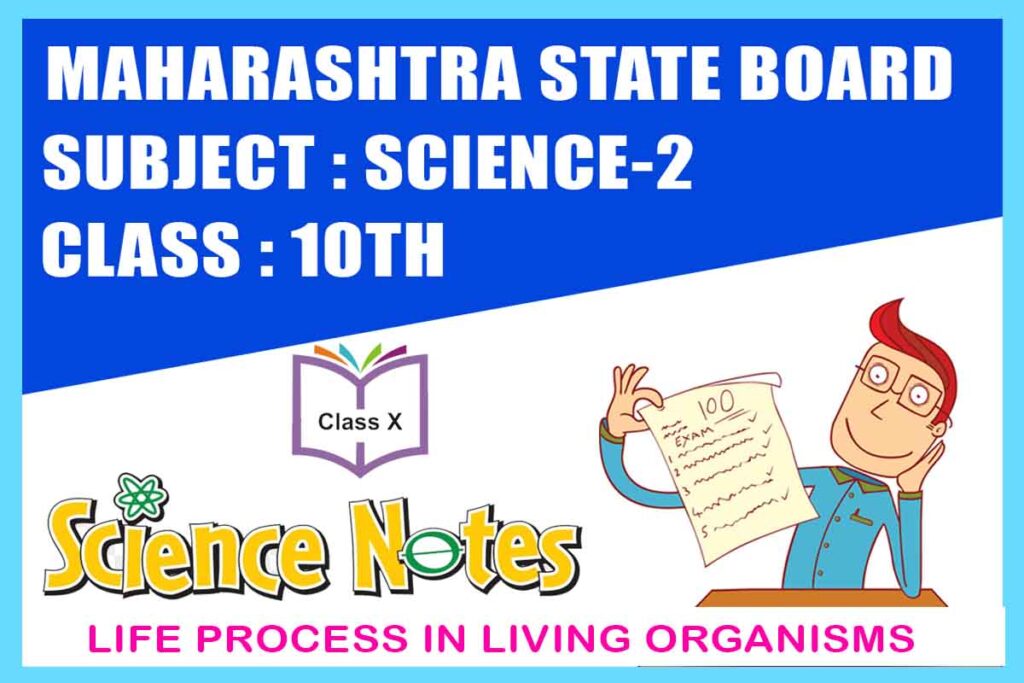
Life Processes in Living Organisms – Part-1 : Welcome to the exciting world of biology! In your 10th-grade science journey with the Maharashtra State Board, you’re about to dive into the captivating chapter titled “Life Processes and Living Organisms – Part 1.” This chapter is a gateway to understanding the intricate ways in which living beings function. Let’s embark on this adventure of discovery, breaking down each topic into digestible bits.
1. Living Organisms and Life Processes
a. All Life Processes in Living Organisms
Imagine living beings as performers in a grand circus of life. They juggle various processes to survive. From breathing to eating, from excreting waste to reproducing, all these are life processes. Get ready to explore these fascinating actions that keep organisms thriving.
b. Carbohydrates: The Energy Makers
Just as fuel powers a car, carbohydrates power living organisms. These energy-packed molecules are like the premium gasoline for your body. Learn how carbohydrates are broken down to release energy, fueling the incredible activities of life.

2. Living Organisms and Energy Production
a. Levels of Respiration: The Energy Factory:
Respiration is the powerhouse of energy production. Delve into the two levels: aerobic and anaerobic. Aerobic respiration is like a high-octane engine, utilizing a series of steps – glycolysis, the tricarboxylic acid cycle, and the electron transfer chain – to generate energy. On the other hand, anaerobic respiration is like a backup generator, kicking in when oxygen is scarce.
b. Aerobic Respiration Unveiled
i. Glycolysis: Breaking Down the First Step
Imagine glycolysis as a master key that opens the gateway to energy. It dismantles glucose into tinier molecules, liberating a modest amount of energy in the process.
ii. Tricarboxylic Acid Cycle: The Energy Carousel
Discover how the tricarboxylic acid cycle takes those smaller molecules and extracts more energy from them.
iii. Electron Transfer Chain Reaction: The Energy Powerhouse
Imagine an energy relay race. This chain reaction passes energy along, resulting in a tremendous energy haul.

c. Anaerobic Respiration: When Oxygen’s Away
Explore what happens when oxygen isn’t around. Anaerobic respiration takes over, producing less energy but still keeping the show running.
d. Energy from Different Food Components
i. Proteins, Lipids, Vitamins – The Energy Trio:
Energy doesn’t just come from carbohydrates. Proteins and lipids also contribute. Vitamins, like supporting actors, play crucial roles too.
ii. Water: The Essential Nutrient
Water, often overlooked, is vital. It’s like the stage where all the life processes take place. Learn why staying hydrated is a must in our life.

3. Cell Division: A Life Process
a. Somatic Cells and Stem Cells: The Builders
Discover the different types of cells – somatic cells that make up the body and stem cells that hold the potential to transform into various cell types.
b. Germ Cells: The Reproductive Architects
Meet germ cells, responsible for passing on life. They hold the instructions for building future generations.
c. Mitosis: Building and Repairing
i. Karyokinesis: Dividing the Nucleus
Mitosis, the cell’s replication process, unfolds in stages. Karyokinesis is like the nucleus’s dance, leading to division.
1. Prophase: Preparing for Division
2. Metaphase: Lining Up the Chromosomes
3. Anaphase: Chromosome Splitting
4. Telophase: Nuclei Formation
ii. Cytokinesis: Dividing the Rest
After the nucleus divides, cytokinesis takes care of the rest of the cell, resulting in two new identical cells.

d. Meiosis: Diversity in Reproduction | life processes in living organisms | Life Processes in Living Organisms
i. Meiosis-I: Shuffling the Deck
Meiosis is like a card shuffling game. In Meiosis-I, homologous chromosomes swap genetic material, creating diversity.
ii. Meiosis-II: Division Redux
Meiosis-II is a lot like mitosis, but the result is four unique cells, ready to contribute to the grand tapestry of life.
Congratulations, young scientists! You’ve embarked on an exploration of life’s inner workings. From the vital processes that keep organisms ticking to the magical world of cell division, you’ve covered an incredible journey. Keep this knowledge close, for it not only fuels your academic path but also ignites a lifelong curiosity about the awe-inspiring living organisms that surround us. So, embrace the beauty of science and the wonders of life processes – you’re well on your way to becoming a biology virtuoso!
Life Processes in Living Organisms | life processes in living organisms part 1 class 10 notes
OTHER NEWS
Opening a Dairy Farm : Apply to get 100% subsidy on opening a dairy farm
(FAQs)
What is the significance of glycolysis in energy production?
Glycolysis is a crucial process that unlocks energy from glucose molecules. It’s the initial step in energy production, providing organisms with the necessary fuel for various activities.
How does aerobic respiration differ from anaerobic respiration?
Aerobic respiration requires oxygen and yields a substantial amount of energy through processes like glycolysis and the electron transfer chain. In contrast, anaerobic respiration occurs without oxygen, producing less energy and often leading to byproducts like lactic acid.
Why are stem cells important in cell division?
Stem cells possess the unique ability to transform into various cell types, playing a pivotal role in growth and repair. They serve as a reservoir for generating specialized cells that constitute different tissues and organs.
What are the key stages of mitosis, and how do they contribute to cell division?
Mitosis encompasses clear stages: prophase, metaphase, anaphase, and telophase. Each phase contributes to the separation of duplicated genetic material and the eventual creation of two identical daughter cells.
How does meiosis ensure genetic diversity in reproduction?
Meiosis introduces genetic diversity by shuffling and recombining genetic material during crossing-over in meiosis-I. This genetic variety is crucial for the adaptation and survival of species in changing environments.
